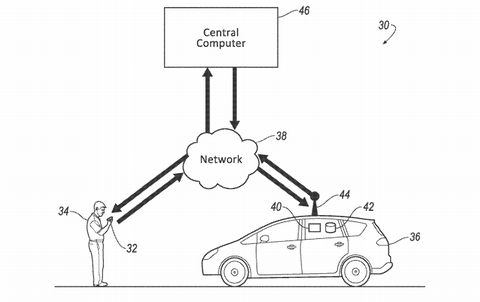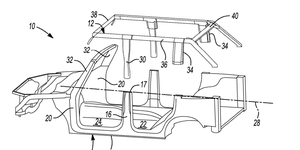
U.S. Patent and Trademark Office
- The creative minds at Ford want to make ride sharing a more enjoyable experience, and they think that our noses play a large part in that.
- The automaker has patented a process that empowers a car to determine what odors exist within a car and adjust to accommodate passengers.
- A real, working example of the patent is in the future, but technology that can detect odors does exist; it’s called an electronic nose.
Imagine (someday in the near future) hailing a ride, either a taxi or other ride-share service, like Uber or Lyft, and getting in the car, only to find that it smells like trash, or worse. Or imagine the discomfort if you’re confronted with something in the air that you’re allergic to. Ford has filed a patent that could be the solution to that problem.
The patent, published on April 9, details a system that is capable of detecting odors and then computing as to whether or not a user would like or even tolerate the smell. After all, when ordering a taxi or ride share, you are often provided with information like the driver’s name, the make, model, and color of the car they’re driving, license plate number, and in the case of apps like Uber and Lyft, the driver’s rating based on previous customers’ feedback. Information you don’t get in advance is what the interior of the car is like and what it smells like. With the Ford system, which it calls “Transportation System Using Odor Preferences,” that is one less thing to worry about. For example, for a user who has stated that they are allergic to peanuts, the system could determine if the peanut allergen was present. If it was present, and in amounts that could be harmful to the user, the rider would be transferred to a different vehicle.
In Ford’s scenario of ride sharing, the user’s preferences would be recorded within an app and communicated to the vehicle’s onboard computer, which would test the odors within the vehicle and compare them to the predetermined thresholds. If any odors are above the threshold level, the rider gets transferred to a different car that meets the odor requirements.
How exactly does Ford intend to detect these smells? The patent doesn’t go into detail, only describing a multitude of different sensors including a spectrometer, a chromatograph, an optical sensor, and a metal-oxide semiconductor sensor. The closest technology currently in use for non-biological smell detection is what’s known in the cosmetics and food industries as an electronic nose, which uses chemical reactions to detect smells within a sample of a compound. These reactions trigger pattern recognition that lets the device identify the odor. Only time will tell if Ford is able to improve the way our rides smell, but based on a few of the ride shares we have experienced, we can only say that it’s a problem worth pursuing.
Source: Motor - aranddriver.com





